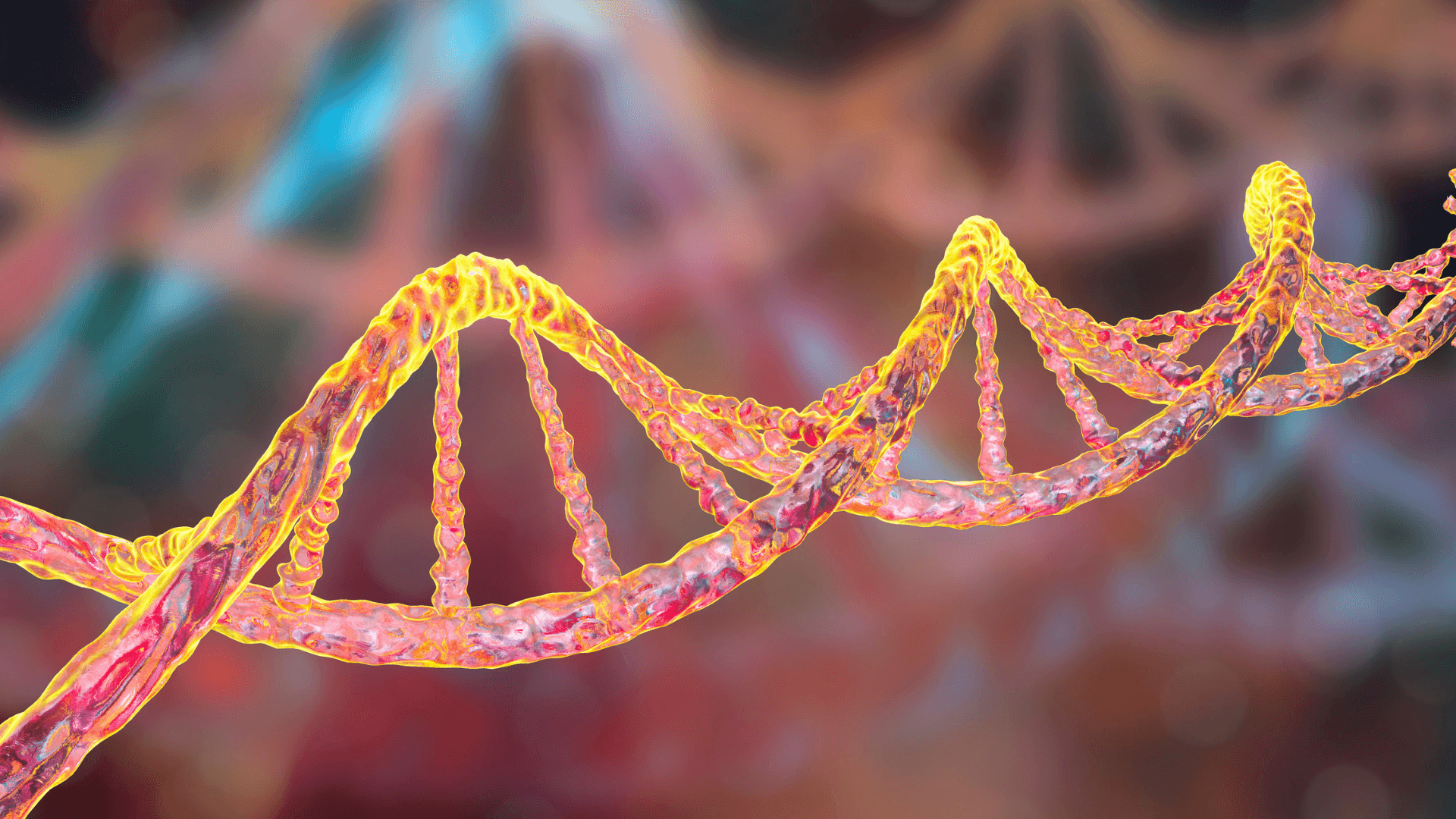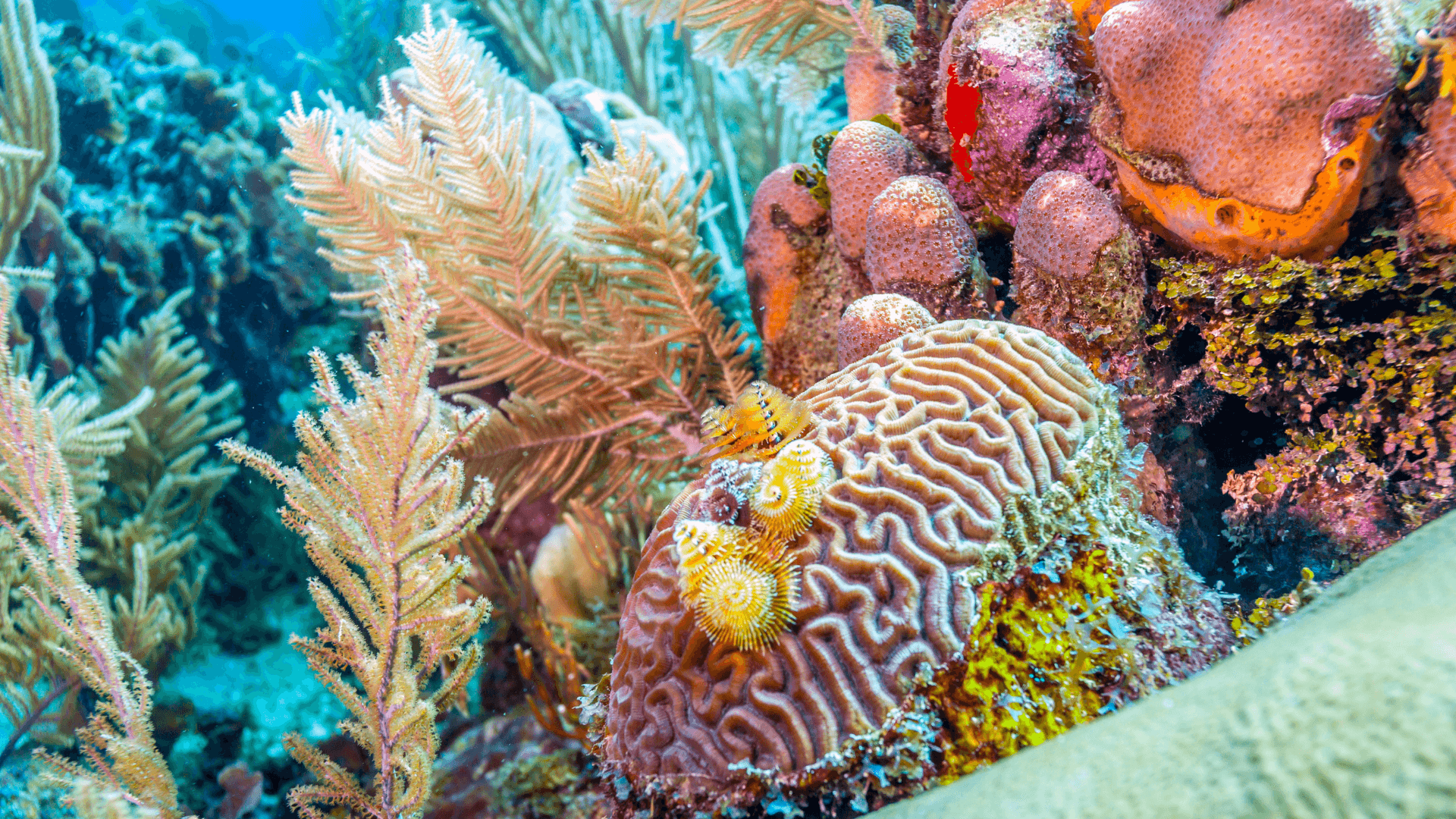Microplastics Detected in Ovarian Fluid: What Does This Mean for Human Fertility?
Microplastics Detected in Ovarian Fluid: What Does This Mean for Human Fertility?
Microplastics Detected in Ovarian Fluid: What Does This Mean for Human Fertility?
Apr 22, 2025
Apr 22, 2025

Illustrative image. Credit: Pavel Danilyuk, Pexels via Canva.
Illustrative image. Credit: Pavel Danilyuk, Pexels via Canva.
For the first time, scientists have identified microplastics in human ovarian follicular fluid. Understand the possible impacts on fertility and how to reduce exposure to these particles.
For the first time, scientists have identified microplastics in human ovarian follicular fluid. Understand the possible impacts on fertility and how to reduce exposure to these particles.
Italian researchers have made an alarming discovery: for the first time, microplastics have been found in human ovarian follicular fluid. The study, conducted in Salerno with 18 women undergoing fertility treatment, detected these synthetic particles in 14 of the 18 samples analyzed.
This finding marks a milestone in understanding the effects of plastic pollution on female reproductive health.
The Importance of Follicular Fluid
Follicular fluid plays a crucial role in reproduction, surrounding and nourishing the oocytes as they mature. It provides nutrients and biochemical signals that support successful fertilization. Microplastic presence in this delicate environment could impair oocyte quality and compromise fertilization.
Microplastics: Invisible Dangers
These tiny particles—under 5 millimeters in size—can carry up to 16,000 different chemical substances, many of which are harmful to human health. Among the most concerning substances are per- and polyfluoroalkyl substances (PFAS), commonly referred to as “forever chemicals,” along with bisphenols like BPA and phthalates. These compounds have been linked to cancer, neurotoxicity, hormone disruption, and fertility issues.
Moreover, microplastics are small enough to cross biological barriers, including the placenta and the blood-brain barrier.
What We Know So Far
This research is part of a broader project led by Dr. Luigi Montano, who has already identified microplastics in other human samples, such as urine and semen. Animal studies reinforce these concerns: in mice, microplastic exposure damaged ovarian tissue, reduced oocyte quality, and led to ovarian dysfunction.
These findings support the hypothesis that microplastic accumulation in the body may be directly related to reduced fertility.
Expert Perspectives
Professor Xiaozhong Yu of the University of New Mexico calls the discovery “highly significant” but emphasizes the need for larger studies. He advocates investigating human exposure levels and their long-term effects on reproductive health. Researchers are also exploring lifestyle and dietary changes to mitigate these impacts.
How to Reduce Exposure to Microplastics
You can take simple steps to lower your daily exposure:
Avoid heating food in plastic containers or storing hot foods and beverages in plastic, as heat promotes particle release.
Choose utensils made of glass, stainless steel, or wood, which are safer and more durable.
Skip disposable paper cups with plastic linings, which can release trillions of particles when in contact with hot liquids, and plastic tea bags, known to shed billions of microplastics into infusions.
Opt for organic produce when possible, since some conventional pesticides contain microplastic additives.
By making these changes, you can significantly reduce your ingestion of microplastics and protect your reproductive health.
—
Want to learn more about the impact of this discovery and the associated risks? Read The Guardian’s full article here.
Italian researchers have made an alarming discovery: for the first time, microplastics have been found in human ovarian follicular fluid. The study, conducted in Salerno with 18 women undergoing fertility treatment, detected these synthetic particles in 14 of the 18 samples analyzed.
This finding marks a milestone in understanding the effects of plastic pollution on female reproductive health.
The Importance of Follicular Fluid
Follicular fluid plays a crucial role in reproduction, surrounding and nourishing the oocytes as they mature. It provides nutrients and biochemical signals that support successful fertilization. Microplastic presence in this delicate environment could impair oocyte quality and compromise fertilization.
Microplastics: Invisible Dangers
These tiny particles—under 5 millimeters in size—can carry up to 16,000 different chemical substances, many of which are harmful to human health. Among the most concerning substances are per- and polyfluoroalkyl substances (PFAS), commonly referred to as “forever chemicals,” along with bisphenols like BPA and phthalates. These compounds have been linked to cancer, neurotoxicity, hormone disruption, and fertility issues.
Moreover, microplastics are small enough to cross biological barriers, including the placenta and the blood-brain barrier.
What We Know So Far
This research is part of a broader project led by Dr. Luigi Montano, who has already identified microplastics in other human samples, such as urine and semen. Animal studies reinforce these concerns: in mice, microplastic exposure damaged ovarian tissue, reduced oocyte quality, and led to ovarian dysfunction.
These findings support the hypothesis that microplastic accumulation in the body may be directly related to reduced fertility.
Expert Perspectives
Professor Xiaozhong Yu of the University of New Mexico calls the discovery “highly significant” but emphasizes the need for larger studies. He advocates investigating human exposure levels and their long-term effects on reproductive health. Researchers are also exploring lifestyle and dietary changes to mitigate these impacts.
How to Reduce Exposure to Microplastics
You can take simple steps to lower your daily exposure:
Avoid heating food in plastic containers or storing hot foods and beverages in plastic, as heat promotes particle release.
Choose utensils made of glass, stainless steel, or wood, which are safer and more durable.
Skip disposable paper cups with plastic linings, which can release trillions of particles when in contact with hot liquids, and plastic tea bags, known to shed billions of microplastics into infusions.
Opt for organic produce when possible, since some conventional pesticides contain microplastic additives.
By making these changes, you can significantly reduce your ingestion of microplastics and protect your reproductive health.
—
Want to learn more about the impact of this discovery and the associated risks? Read The Guardian’s full article here.
Italian researchers have made an alarming discovery: for the first time, microplastics have been found in human ovarian follicular fluid. The study, conducted in Salerno with 18 women undergoing fertility treatment, detected these synthetic particles in 14 of the 18 samples analyzed.
This finding marks a milestone in understanding the effects of plastic pollution on female reproductive health.
The Importance of Follicular Fluid
Follicular fluid plays a crucial role in reproduction, surrounding and nourishing the oocytes as they mature. It provides nutrients and biochemical signals that support successful fertilization. Microplastic presence in this delicate environment could impair oocyte quality and compromise fertilization.
Microplastics: Invisible Dangers
These tiny particles—under 5 millimeters in size—can carry up to 16,000 different chemical substances, many of which are harmful to human health. Among the most concerning substances are per- and polyfluoroalkyl substances (PFAS), commonly referred to as “forever chemicals,” along with bisphenols like BPA and phthalates. These compounds have been linked to cancer, neurotoxicity, hormone disruption, and fertility issues.
Moreover, microplastics are small enough to cross biological barriers, including the placenta and the blood-brain barrier.
What We Know So Far
This research is part of a broader project led by Dr. Luigi Montano, who has already identified microplastics in other human samples, such as urine and semen. Animal studies reinforce these concerns: in mice, microplastic exposure damaged ovarian tissue, reduced oocyte quality, and led to ovarian dysfunction.
These findings support the hypothesis that microplastic accumulation in the body may be directly related to reduced fertility.
Expert Perspectives
Professor Xiaozhong Yu of the University of New Mexico calls the discovery “highly significant” but emphasizes the need for larger studies. He advocates investigating human exposure levels and their long-term effects on reproductive health. Researchers are also exploring lifestyle and dietary changes to mitigate these impacts.
How to Reduce Exposure to Microplastics
You can take simple steps to lower your daily exposure:
Avoid heating food in plastic containers or storing hot foods and beverages in plastic, as heat promotes particle release.
Choose utensils made of glass, stainless steel, or wood, which are safer and more durable.
Skip disposable paper cups with plastic linings, which can release trillions of particles when in contact with hot liquids, and plastic tea bags, known to shed billions of microplastics into infusions.
Opt for organic produce when possible, since some conventional pesticides contain microplastic additives.
By making these changes, you can significantly reduce your ingestion of microplastics and protect your reproductive health.
—
Want to learn more about the impact of this discovery and the associated risks? Read The Guardian’s full article here.

Compartilhar em:
Ver Também
Ver Também

Microplásticos são detectados em fluido ovariano: o que isso significa para a fertilidade humana?
Apr 22, 2025

Crise humanitária em Mianmar: milhões precisam de ajuda após terremotos devastadores
Apr 21, 2025

Vida em outro planeta? Gás ligado à vida é detectado no exoplaneta K2-18b
Apr 18, 2025

Lobos terríveis recriados? Conheça os animais geneticamente modificados pela Colossal Biosciences
Apr 11, 2025

Segurança digital e inteligência artificial: soluções e desafios em 2025
Apr 3, 2025

Saúde cardiovascular em comunidades rurais: estudo revela impactos dos fatores sociais
Apr 1, 2025

Calor inesperado marca o primeiro dia da primavera de 2025 no Reino Unido: sinal das mudanças climáticas?
Mar 21, 2025

DeepSeek AI: o chatbot chinês que está sacudindo o mercado global
Feb 7, 2025

Estudo revela que a vida social ativa pode reduzir o risco de demência
Feb 4, 2025

Ano Novo Lunar 2025: a chegada do Ano da Serpente
Jan 30, 2025

Nova hipótese sobre a origem dos dinossauros desafia conceitos tradicionais
Jan 27, 2025

Ambiente potencialmente habitável em Marte é descoberto pelo Perseverance
Dec 20, 2024

As emoções e o corpo humano: conexões milenares nos textos neo-assírios
Dec 20, 2024

Estudo relaciona poluição do ar ao risco de tromboembolismo venoso
Dec 20, 2024

Colapso da plataforma de gelo Conger: alerta para a Antártica Oriental
Dec 20, 2024

Revolução XRISM: novas descobertas sobre buracos negros supermassivos
Oct 15, 2024

Estudo aponta que duplicação do gene AMY1, relacionado à digestão de amido, precede a agricultura
Oct 14, 2024

Nascimentos na UE caem para menos de 4 milhões pela primeira vez desde 1960
Oct 11, 2024

Escavação na Dinamarca revela 50 esqueletos Viking incrivelmente preservados
Oct 10, 2024

Estudo indica maior incidência de asma e rinite alérgica em pessoas nascidas no outono e inverno na Finlândia
Oct 9, 2024

Estudo demonstra semelhanças entre a puberdade de adolescentes da Idade do Gelo e jovens modernos
Oct 8, 2024

Análise de DNA em múmias chinesas de 3.600 anos revela queijo mais antigo do mundo
Oct 7, 2024

Estudo revela estabilidade genética de populações da África Austral por 10 milênios
Oct 4, 2024

Nove lugares míticos que podem ter existido, segundo descobertas arqueológicas
Oct 3, 2024

Como os direitos humanos podem salvar recifes de coral e responsabilizar governos
Oct 2, 2024

Relatório da Carbon Brief aponta que 2024 pode ser o ano mais quente da história
Sep 4, 2024

Clima determina a distribuição de mamíferos, revela estudo da Universidade Estadual da Carolina do Norte
Sep 4, 2024

Estudo sugere que 'hotspots' de fósseis na África distorcem a visão da evolução humana
Sep 3, 2024

Ruído incomum na Starliner de Boeing intriga astronauta da NASA
Sep 3, 2024

Estudo revela que o microbioma humano é altamente individualizado
Sep 2, 2024

Compartilhar em:

Compartilhar em:

Microplásticos são detectados em fluido ovariano: o que isso significa para a fertilidade humana?
Apr 22, 2025

Crise humanitária em Mianmar: milhões precisam de ajuda após terremotos devastadores
Apr 21, 2025

Vida em outro planeta? Gás ligado à vida é detectado no exoplaneta K2-18b
Apr 18, 2025

Lobos terríveis recriados? Conheça os animais geneticamente modificados pela Colossal Biosciences
Apr 11, 2025

Segurança digital e inteligência artificial: soluções e desafios em 2025
Apr 3, 2025

Saúde cardiovascular em comunidades rurais: estudo revela impactos dos fatores sociais
Apr 1, 2025

Calor inesperado marca o primeiro dia da primavera de 2025 no Reino Unido: sinal das mudanças climáticas?
Mar 21, 2025

DeepSeek AI: o chatbot chinês que está sacudindo o mercado global
Feb 7, 2025

Estudo revela que a vida social ativa pode reduzir o risco de demência
Feb 4, 2025

Ano Novo Lunar 2025: a chegada do Ano da Serpente
Jan 30, 2025

Nova hipótese sobre a origem dos dinossauros desafia conceitos tradicionais
Jan 27, 2025

Ambiente potencialmente habitável em Marte é descoberto pelo Perseverance
Dec 20, 2024

As emoções e o corpo humano: conexões milenares nos textos neo-assírios
Dec 20, 2024

Estudo relaciona poluição do ar ao risco de tromboembolismo venoso
Dec 20, 2024

Colapso da plataforma de gelo Conger: alerta para a Antártica Oriental
Dec 20, 2024

Revolução XRISM: novas descobertas sobre buracos negros supermassivos
Oct 15, 2024

Estudo aponta que duplicação do gene AMY1, relacionado à digestão de amido, precede a agricultura
Oct 14, 2024

Nascimentos na UE caem para menos de 4 milhões pela primeira vez desde 1960
Oct 11, 2024

Escavação na Dinamarca revela 50 esqueletos Viking incrivelmente preservados
Oct 10, 2024

Estudo indica maior incidência de asma e rinite alérgica em pessoas nascidas no outono e inverno na Finlândia
Oct 9, 2024

Estudo demonstra semelhanças entre a puberdade de adolescentes da Idade do Gelo e jovens modernos
Oct 8, 2024

Análise de DNA em múmias chinesas de 3.600 anos revela queijo mais antigo do mundo
Oct 7, 2024

Estudo revela estabilidade genética de populações da África Austral por 10 milênios
Oct 4, 2024

Nove lugares míticos que podem ter existido, segundo descobertas arqueológicas
Oct 3, 2024

Como os direitos humanos podem salvar recifes de coral e responsabilizar governos
Oct 2, 2024

Relatório da Carbon Brief aponta que 2024 pode ser o ano mais quente da história
Sep 4, 2024

Clima determina a distribuição de mamíferos, revela estudo da Universidade Estadual da Carolina do Norte
Sep 4, 2024

Estudo sugere que 'hotspots' de fósseis na África distorcem a visão da evolução humana
Sep 3, 2024

Ruído incomum na Starliner de Boeing intriga astronauta da NASA
Sep 3, 2024

Estudo revela que o microbioma humano é altamente individualizado
Sep 2, 2024
